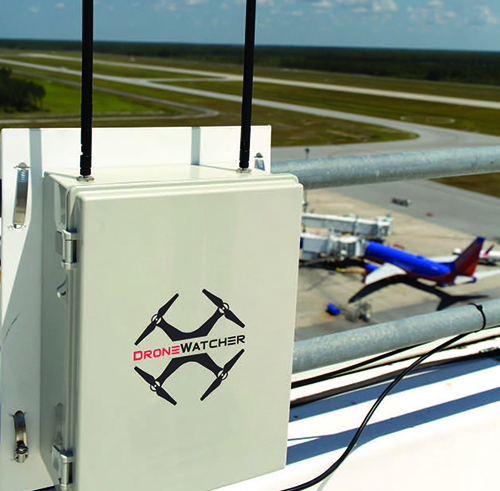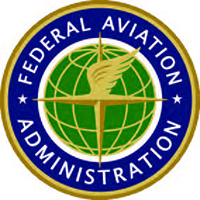Northwest Florida Beaches Int'l Installs Drone Detection System

As the recreational drone craze continues to grow, the popular fad is literally hitting the radar of personnel charged with maintaining the safety and security of airports around the country.
Recent market research indicates that sales of drones within the United States more than doubled between February 2016 and February 2017. The FAA expects them to climb from 2.5 million this year to 7 million in 2020.
Increased flight time by unmanned aerial systems, commonly referred to as UAS, has airports across the United States and abroad scrambling to keep their airspace safe. Some are installing detection systems and developing high-tech response strategies. Northwest Florida Beaches International (ECP) in Panama City, FL, is one of those airports.
 facts&figures Project: Drone Detection System Location: Northwest Florida Beaches Int'l Airport System Supplier: DeTect Cost: Prices for components range from $5 for smartphone app to $15,000 for radio frequency detection unit; high-end equipment is usually leased with monthly service package |
"The concern for safety is the focus of every airport person, whether you are the airport director, an airport police officer or a maintenance person," says ECP Executive Director Parker McClellan. "There are millions of drones now flying in the air, so these are clearly something we have become aware of."
Fortunately for McClellan, one of the leading companies in drone detection radar is located in ECP's own backyard. DeTect, based in Panama City, manufactures drone surveillance and interdiction systems designed specifically for airports and other security and surveillance applications.
The company started out in 2003 manufacturing radar units to detect and track small birds around airfields to decrease the risk of bird strikes. But these days, the multi-level DroneWatcher detection and defense system is its headline product. According to company personnel, it provides the highest level of detection and control available.
ECP installed the system earlier this year.
New Use For Existing Technology
Gary Andrews, general manager and chief executive officer at DeTect, notes that the basic technology of the company's DroneWatcher system has existed for years. When drones began to emerge as a concern for airports and other facilities such as prisons, sports stadiums, nuclear power plants and government buildings, DeTect developed a long-range radio frequency scanner that detects the frequency and identifies the "control data packets" used to fly drones.

"Through our bird radar business, we developed special artificial intelligent algorithms into the system that allow us to classify bird targets in real time," explains Andrews. "We can use that same technology for drones-taking all of these targets that we're seeing in an environment and [applying] real-time filtering to reject the false positive alerts we'll see from the bird targets and focus only on the drones. The same system can be dual-purpose, by providing one stream of data for birds and wildlife and a separate stream for drone activity."
Multiple Options
The DroneWatcher system includes three levels of products that can operate independently or together. The first is the DroneWatcher App, which is designed to detect 95% of non-encrypted, consumer-grade drones (the majority of what is being sold to hobbyists). The company offers a basic version of the app for free and a full version for $5.
Airport personnel can load the app on Android smartphones or tablets (it is not compatible with Apple products) and let it run in the background during their workday. The app delivers drone incursion alerts via audible alarms and text messages. The range of detection is affected by several variables such as Wi-Fi signal strength, site conditions and ambient interferences; but DeTect personnel say the system generally scans about one-half mile of airspace.

The system's second level, DroneWatcherRF (for radio frequency) monitors the radio frequency spectrum to identify drone "signatures" (electromagnetic fingerprints). It is designed to detect more than 99% of commercially available drones on the market within a radius of up to two miles. Because DeTect maintains and continually updates a database of the unique signatures used by manufacturers, the system can immediately identify what type of drone is detected. Audio and visual alerts are delivered on the unit display and via text message.
Individual DroneWatcherRF units cost about $15,000, but most customers rent a system with a monthly service package rather than purchasing it outright.
The third level of the system is DroneWatcher DSR (drone surveillance radar). It is designed specifically to detect small, low-flying targets that are not being controlled by radio frequency. According to company personnel, DSR is able to detect all consumer drones as well as military cooperative and non-cooperative drones within line sight and at longer ranges beyond two miles. The DroneWatcher DSR detects and tracks programmed drones flying on autopilot that are not detectable by DroneWatcher APP and RF.
"The idea behind our system is that the end user can use whatever level of the technology they want to get to the security level they need to achieve," says Andrews.
Assessing the Threat
McClellan reports that ECP has not detected much drone activity around the airport since installing the system. He suspects the airport generally avoids such traffic due to its rural location about 10 miles northwest of Panama City Beach, a popular vacation destination. Nevertheless, he says he is glad to have the system in place because threats posed by drones could change rapidly.
"I am a firm believer in staying on the leading edge and maximizing all of the tools that are available to operators of airports and airlines to enhance the level of safety," he stresses. "Right now, the main concern is hobbyists. Anytime something hits an airplane, whether it's an engine, a wing or goes through the windscreen of an airplane, it can create life-safety issues for a pilot and the crew and passengers. That's true whether it's a Cessna 150, an experimental aircraft or a Boeing 737."
But these days, terrorism is a fact of life as well. ECP's drone detection system allows the airport to be on alert around-the-clock and operate the safest possible facility, he notes. "If there was a drone flying in one of our approach zones where it could potentially have an adverse effect on the operations of the airport, we would send our airport police officers out to alert them they are in violation of FAA laws." (See sidebar on Page 60 for more details.)
Andrews notes that the full DroneWatcher system can be installed in less than a day, and minimal training is necessary for airport personnel to operate it. He cautions airport managers who are shopping for a drone detection system to choose one that will remain current with changing technology. Some systems will not, he remarks.
The FAA continues to test drone detection technology to develop minimum performance standards for detection at U.S. airports.
"Buyers of this technology need to make sure that whatever they acquire today is going to meet their requirements six months and two or three years down the road," Andrews says. "We really are in the infancy of this issue and the real threat it poses to airports."
FAA Drone Rules The FAA Modernization and Reauthorization Act of 2012 requires hobbyist drone operators to contact airport management or the pertinent air traffic control tower prior to flying a drone within five miles of an airport. At first blush, this sounds easy enough. However, increased interest in flying drones as a hobby has people discovering just how many airports there are. According to a report by the Aircraft Owners and Pilots Association (AOPA), about 70% of the U.S. population lives within 20 miles of one of the country's 30 major airports. Add in more than 13,000 smaller U.S. airports, and a large number of drone hobbyists live or work within five miles of an airport. Beyond the airport/tower notification requirement, FAA rules stipulate that a drone cannot weigh more than 55 pounds, and operators must keep drones in their visual line of sight at all times. Additionally, unmanned aerial systems must also always yield the right of way to manned aircraft. |
2022 Charlotte Douglas International Airport Report of Achievement
 Giving back to the community is central to what Charlotte Douglas International Airport and its operator, the City of Charlotte Aviation Department, is about, and last year was no different.
Giving back to the community is central to what Charlotte Douglas International Airport and its operator, the City of Charlotte Aviation Department, is about, and last year was no different.
Throughout 2022, while recovering from the COVID-19 pandemic, we continued our efforts to have a positive impact on the Charlotte community. Of particular note, we spent the year sharing stories of how Connections Don't Just Happen at the Terminal - from creating homeownership and employment opportunities to supporting economic growth through small-business development and offering outreach programs to help residents understand the Airport better.
This whitepaper highlights the construction projects, initiatives, programs and events that validate Charlotte Douglas as a premier airport.
Download the whitepaper: 2022 Charlotte Douglas International Airport Report of Achievement.









